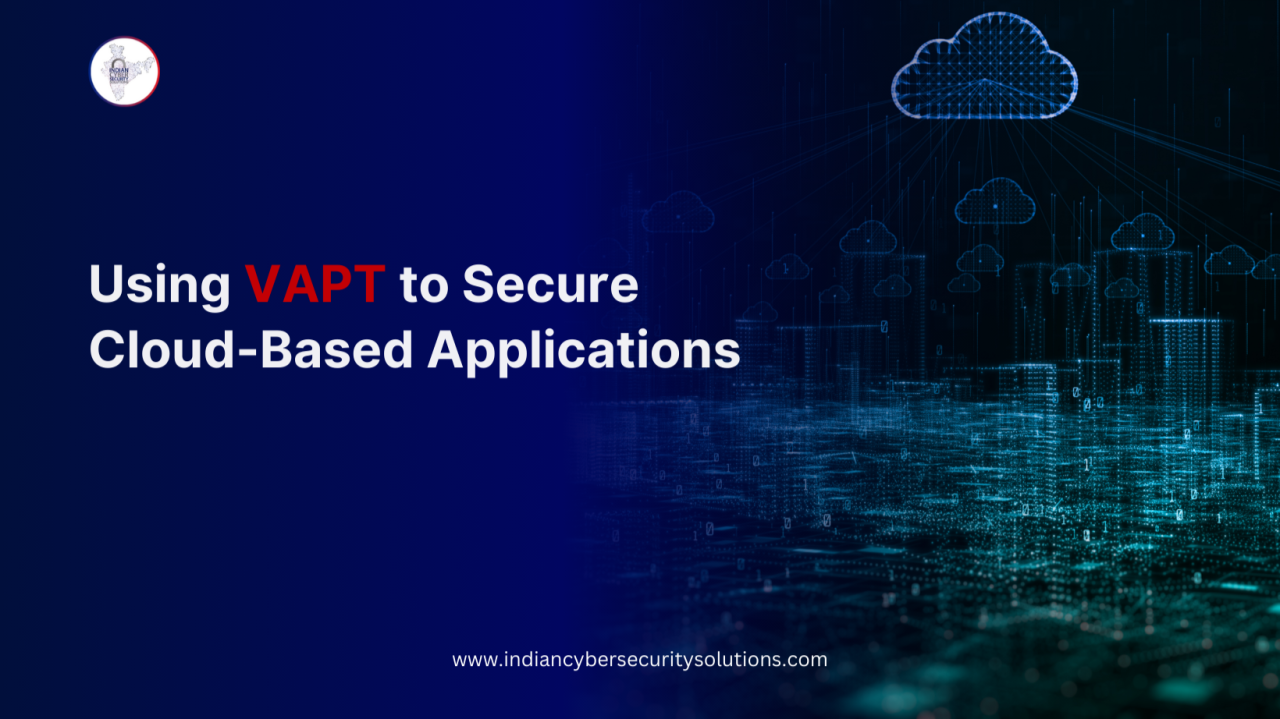
Using VAPT to Secure Cloud-Based Applications
Indian Cyber Security Solutions (GreenFellow IT Security Solutions Pvt Ltd)
"Securing your world Digitally"
As cloud adoption continues to rise, businesses are increasingly relying on cloud-based applications to streamline operations, store sensitive data, and interact with customers. However, the growing complexity of cloud environments also increases the risk of security vulnerabilities. For CISOs, CTOs, CEOs, and small business owners, securing cloud-based applications is more critical than ever. Vulnerability Assessment and Penetration Testing (VAPT) is an essential process that helps identify and fix security weaknesses before they can be exploited by malicious actors.
In this article, we will explore how VAPT can be used to secure cloud-based applications, discuss key vulnerabilities unique to cloud environments, and share real-world case studies that demonstrate the effectiveness of our VAPT services at Indian Cyber Security Solutions. Whether your organization is using AWS, Microsoft Azure, Google Cloud, or other cloud platforms, understanding how to leverage VAPT will help strengthen your security posture.
The Importance of Securing Cloud-Based Applications
Cloud-based applications bring numerous advantages to businesses, such as scalability, cost-efficiency, and accessibility. However, these benefits come with security challenges:
VAPT is a powerful solution that enables businesses to identify vulnerabilities, simulate real-world attacks, and implement effective remediation strategies to secure their cloud applications.
What is VAPT?
Vulnerability Assessment and Penetration Testing (VAPT) combines two critical security processes:
By using both VA and PT, businesses can get a complete picture of their security posture and fix vulnerabilities before attackers can exploit them.
Common Vulnerabilities in Cloud-Based Applications
Before diving into how VAPT works in cloud environments, let’s look at some common vulnerabilities that affect cloud-based applications:
Using VAPT to Secure Cloud-Based Applications
1. Vulnerability Assessment in the Cloud
The first step in securing cloud-based applications is performing a vulnerability assessment. This automated process scans for known vulnerabilities across the cloud infrastructure, including applications, databases, virtual machines, and storage.
Key Steps in Cloud Vulnerability Assessment:
Case Study: Vulnerability Assessment for an E-Commerce Platform
A large e-commerce company using AWS for its cloud-based platform engaged Indian Cyber Security Solutions for a vulnerability assessment. During the scan, we identified multiple misconfigurations in their S3 buckets, which could have exposed customer data to unauthorized access. After fixing these issues, the client significantly reduced its exposure to security threats and achieved compliance with PCI-DSS.
2. Penetration Testing for Cloud-Based Applications
While vulnerability assessments provide a broad overview of security weaknesses, penetration testing goes deeper by simulating real-world attacks to understand how vulnerabilities could be exploited. This phase provides insights into the potential impact of a successful breach and helps identify weak points in cloud application defenses.
领英推荐
Key Steps in Cloud Penetration Testing:
Case Study: Penetration Testing for a Financial Institution
A financial institution with a hybrid cloud infrastructure used Indian Cyber Security Solutions to conduct penetration testing on its cloud-based customer portal. Our ethical hackers identified a vulnerability in the API authentication process, which could have allowed unauthorized access to customer financial data. After implementing stronger authentication measures, including MFA and secure API tokens, the client secured its platform and prevented potential data breaches.
3. Continuous VAPT in Cloud Environments
While traditional VAPT is often conducted on a periodic basis, the dynamic nature of cloud environments requires continuous security monitoring. New vulnerabilities can emerge anytime, and continuous VAPT helps businesses stay ahead of evolving threats.
Continuous VAPT Process:
Case Study: Continuous VAPT for a SaaS Provider
A SaaS company delivering services to multiple clients across industries adopted continuous VAPT services from Indian Cyber Security Solutions to ensure ongoing security. By performing regular scans and quarterly penetration tests, we helped the client identify and fix new vulnerabilities as they emerged. This approach reduced the risk of data breaches and allowed the company to maintain compliance with ISO 27001 standards.
4. Cloud-Specific VAPT Tools and Techniques
To effectively secure cloud-based applications, security teams must use cloud-specific VAPT tools and techniques that cater to the unique aspects of cloud environments. Below are some of the tools frequently used by Indian Cyber Security Solutions in cloud VAPT engagements:
The Benefits of VAPT for Cloud-Based Applications
Implementing VAPT for cloud-based applications provides several key benefits:
1. Proactive Risk Management
VAPT allows businesses to identify vulnerabilities before attackers can exploit them. This proactive approach ensures that potential security risks are mitigated in advance, minimizing the risk of costly data breaches or downtime.
2. Regulatory Compliance
Many industries require businesses to meet specific security standards, such as PCI-DSS, HIPAA, and ISO 27001. VAPT helps ensure that your cloud applications comply with these regulations by identifying and remediating security gaps.
3. Strengthened Cloud Security Posture
With the increasing complexity of cloud environments, having a strong security posture is essential. VAPT provides businesses with a thorough understanding of their cloud security vulnerabilities and how to fix them, ensuring that critical assets and data are protected.
Why Choose Indian Cyber Security Solutions for Cloud VAPT?
At Indian Cyber Security Solutions, we offer a comprehensive suite of VAPT services designed to secure cloud-based applications and infrastructures. Here’s why businesses choose us:
Conclusion
As businesses increasingly rely on cloud-based applications, securing these environments has never been more critical. Vulnerability Assessment and Penetration Testing (VAPT) is a powerful tool that helps organizations identify and fix security vulnerabilities before they can be exploited. By conducting regular VAPT assessments and adopting continuous security monitoring, businesses can strengthen their cloud security posture and protect sensitive data.
Digital Marketing Executive
2 个月Great article! Cloud security is more important than ever, and this breakdown on using VAPT to secure cloud-based applications is super helpful. Thanks for sharing such valuable insights!
Insightful
#CFBR